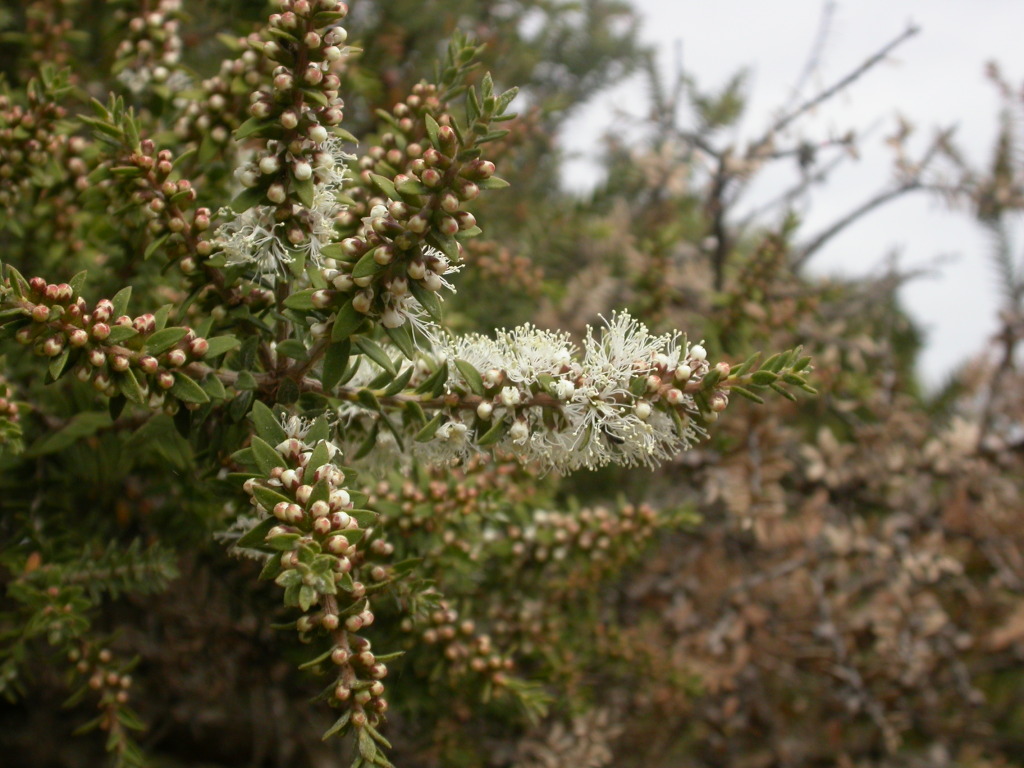Melaleuca lanceolata
OttoShrub or small tree to 10 m high, glabrous except on young shoots and axes; bark hard, fissured, rarely slightly papery or flaking. Leaves alternate, linear to narrowly lanceolate or narrowly oblanceolate, 5–15 mm long, 1–3 mm wide, tip acute, often bent downwards; veins 3 (with intramarginal veins) or indistinct; petiole c. 1 mm long. Inflorescence a dense spike, mostly 2–4 cm long, 15–18 mm wide; axis pubescent, growing on into a leafy shoot. Flowers 3 per bract (which is often leaf-like); stamens 8–14 per bundle, white or cream, claw 1–2 mm long, free part of filaments 3–5 mm long. Capsules spherical to urn-shaped, 3–5 mm wide, with a constricted orifice, the pointed sepals often semi-persistent. Flowers mostly in summer.
LoM, MuM, Wim, GleP, Brid, VVP, VRiv, MSB, RobP, MuF, GipP, OtP, WaP, Gold, CVU, GGr, DunT, OtR. Also WA, SA, Qld, NSW. Common on sandy, often calcareous soils on coastal dunes and cliffs or, inland, mostly along creek beds at edges of rivers and waterbodies or in mallee on shallow sandy soils.
Previously considered to contain 4 subspecies (3 endemic to Western Australia, and the nominate subspecies found only in eastern Australia), but the distinction between these is no longer recognised.
 Spinning
Spinning


